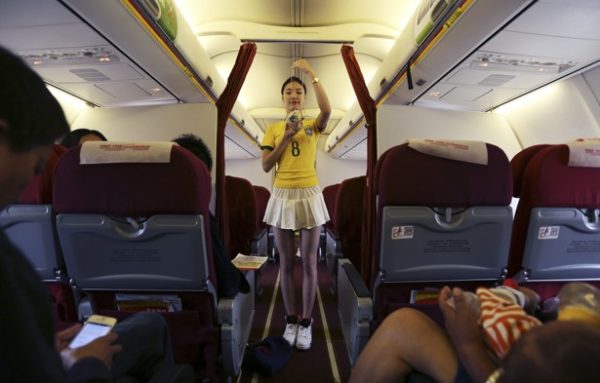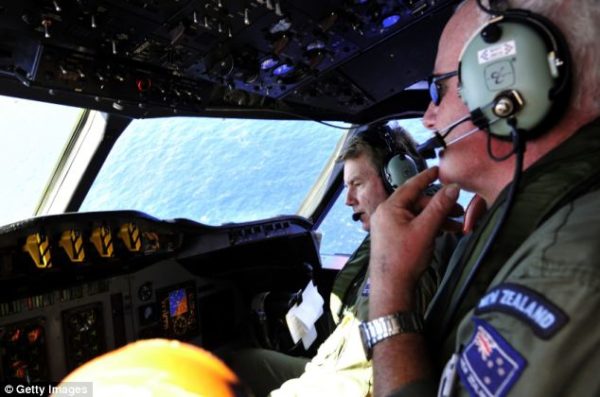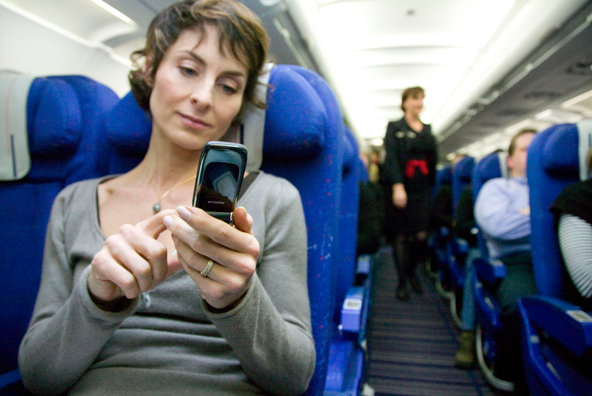
It is a routine practice for flight attendants to ask passengers on board an aeroplane to switch off or put their smart devices on flight mode. This warning is repeated with all seriousness, especially when the plane if taking-off or about to land.
When the plane has taken off and gained stability in the air, those who have their devices off can switch it on, but it is still recommended that they put it on flight mode.
Passengers obey the instruction without asking about why they are being told to put their Smartphones on flight mode. Today, we are lucky to have some aviation experts who will educate us on what will happen if passengers refuse to switch their devices to flight mode while on board an airplane. We acknowledge that we sourced the article from the Tech Worm.
The shortest answer a passenger will get from a flight attendant, is failure to switch off will result into the device’s signals interfering with the plane’s electrical and telecommunication systems. So, the next question will be, if the signals interfere with the plane’s communication systems, what will happen next? Can it cause a malfunction, or even lead to the plane crashing? The attendant might not be able to give a detail answer to these questions, so let us now hear what the experts have to say.
According to aviation experts, there is no evidence that signals from passengers’ electronic devices have ever caused a plane to malfunction and crash. The experts say that the reason for prospective safety concerns on the devices is due to when you are more than 10,000 feet in the air, your cell phone signal bounces off multiple towers, sending out a stronger signal. This is something that might congest the networks on the ground.
Again, if you do not switch your device to flight mode, it can annoy pilots by causing an unpleasant sound for air traffic controllers. It is said a Smartphone’s radio emissions can be very strong. It can go up to about 8 Watt per square metre. Repetition of this extreme noise from passengers’ devices could cause the crew to miss a crucial radio call from air traffic control.
A pilot wrote in a blog post for Airline Updates that transmitting mobiles can cause audible interference on an aircraft’s radios, saying that it is not that a critical safety concern.
“Your phone will probably annoy a few pilots and air traffic controllers. But, most likely, not badly enough for them to take action against you if that’s what you want to know. You may have heard that unpleasant noise from an audio system that occasionally happens when a mobile phone is nearby. I actually heard such noise on the radio while flying. It is not safety critical, but is annoying for sure,” the pilot wrote.
According to the pilot, those problems are something like the noise that can be heard when a Smartphone rings near to a speaker: A slow, percussive thumping. But instead of coming out of a speaker, it can be heard through the headsets that are worn by pilots.
He adds that if 50 people on board the plane did not turn their Smartphone to flight mode, it would cause a lot of radio pollution, admitting that there has never been a case of a Smartphone or any device causing a plane to crash.
An aeronautics engineer named Coenraad Loubser explains further on the issue: “To compound matters, the weaker the signal your cell phone picks up from the tower, the more it amplifies its signal to try and get a response (and the more battery it uses). Planes with onboard cell coverage, allow your phone to communicate using very low power, or Wi-Fi. When you put your phone in Airplane mode, the GSM/3G Radio inside your phone is completely disabled and you can still use the phone for other functions.”
So, now you know why you are being asked to put your phone on flight mode while on board a flight. You also know the consequences of failing to do so. We advise that when you are flying, always stick to the rules onboard.
You want to support Anonymous Independent & Investigative News? Please, follow us on Twitter: Follow @AnonymousNewsHQ
This article (Aviation Experts: The Truth Behind Switching Your Smartphone to Airplane Mode During Flight) is a free and open source. You have permission to republish this article under a Creative Commons license with attribution to the author and AnonHQ.com.









Not exactly sure how you can get 8watts of power per square metre from a transmitter that transmits at 0.6Watts maximum.
Yeah, seems like this article has some bs…
But what if I want to get bare Pokemon Go miles/eggs?
I’ll be damned
Use a private jet
Going faster then 20km/h makes eggs not hatch
Bullshit story……an average smartphone broadcasts at approx. 0.8 watts, far short of the claims of 8 watts in the article. In fact, the benefits of a built-in hard-wired car phone is that it broadcasts at a max. of 3 watts……..
Also, the shielding around all wiring used in aviation protects the wires from such incredibly weak signals.
DON’T BE FOOLED PEOPLE.
the question is if having to turn your phone off is a bunch of bs why do they continue to ask us, there must be a reason
Well Please tell me what phone have this 8w capability?
Typical RF power from a handheld ham radio VHF/UHF transceiver is 5w
Maximum output from a Power class 1 mobile is 2w
Maximum output from a Power class 2 mobile is 500 mW
Maximum output from a Power class 3 mobile is 251 mW
Is this a new class Mobile??
I want one….. WOW!! :p